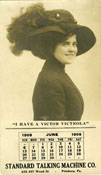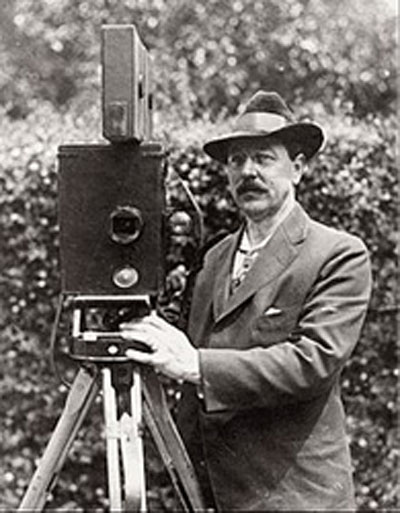On this Day Factola
March 12, 1869
.
Birthday of Leon Forrest Douglass (March 12, 1869 - September 7, 1940) - Phonograph Pioneer
Douglass was born in rural Nebraska, near present-day Syracuse. His parents were Seymour James Douglass, a millwright and carpenter, and Mate (Fuller) Douglass. He attended grammar school in Lincoln, Nebraska, was apprenticed to a printer, at eleven was working as a telegraph messenger, and by seventeen was telephone exchange manager for the Nebraska Telephone Company in Seward.
Phonograph
In 1888 Douglass saw a phonograph for the first time and was fascinated. He made his own and took it to Omaha to show it to E.A. Benson, President of the Nebraska Phonograph Co., who hired him as the company’s agent for the western part of the state. In 1889 he invented a nickel-in-the-slot attachment for the phonograph. Benson paid $500 for the patent and promoted Douglass to a job with the Chicago Central Phonograph Company, which he also owned and that was part of the Thomas Edison-affiliated North American Phonograph Company, distributor for the Edison Phonograph. In the early 1890s Douglass invented a machine for duplicating phonograph cylinders and became known as "Duplicate Doug." He sold this patent to Edward Easton, director of the American Graphophone Company and president of the Columbia Phonograph Company, moved to Washington D.C. and worked for Easton briefly before returning to the Chicago Central Phonograph Company as a manager in 1892. He was elected Vice President and Treasurer, and secured a concession for a hundred slot phonographs at the World's Columbian Exposition, better known as the 1893 Chicago World's Fair. At the fair he also met Peter Bacigalupi of Lima, Peru and San Francisco; he shipped phonographs to Lima for him and later traveled to San Francisco where he met his step-sister Victoria Adams, whom he married in 1897. After the Chicago fair closed, Douglass bought the hundred slot phonographs and secured a concession for the 1894 Midwinter Fair in San Francisco; this concession and the phonographs were ultimately taken over by Bacigalupi, who then used the machines to open a phonograph arcade on Market Street.
One business opportunity that Douglass was unable to bring to fruition was a contract to exhibit Thomas Edison’s kinetoscope at the World’s Fair. This would have been the first public exhibition of moving pictures, but Edison objected to a clause in the fair contract requiring a bond guaranteeing that the exhibit would be ready by the opening of the fair.
Victrola
In August 1900, after a brief period working in Philadelphia for the Berliner Gramophone Co., which was closed by a legal action, Douglass agreed to go into business with Eldridge R. Johnson, who owned a machine shop in Camden, New Jersey and had supplied machines to Berliner. The company started doing business in September 1900 as The Consolidated Talking Machine Company but changed to using Johnson’s name because of a conflict with a Berliner company name. On October 3, 1901 it incorporated as the Victor Talking Machine Company. Douglass said it was named after his wife, but others think it more likely Johnson chose the name to celebrate his engineering and legal triumphs. As Vice President and General Manager at Victor, Douglass was totally responsible for publicity and sales at Victor and therefore is responsible for popularizing the image of the dog listening to “His Master’s Voice”. He also developed and patented the cabinet and stand that became the Victrola.
This made him the inventor of what was by the 1920s the most popular home entertainment device in America.
Motion pictures
The other large area of Douglass’ technical innovations was motion pictures. Inspired by an Ives Kromskop that he bought in 1898, he began experimenting with color in 1912, and in 1916 patented a process for filming in “natural color” (as opposed to hand-tinting), one of the forerunners of Technicolor.
Text Courtesy of Wikipedia


